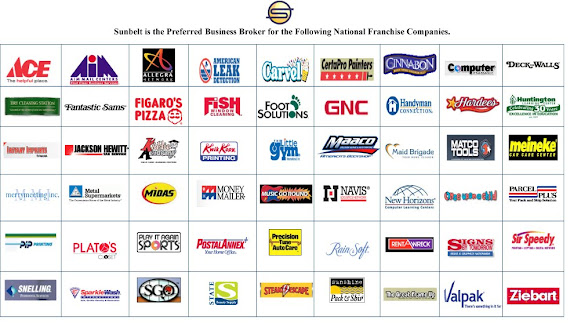During a company merger, the devil is in the
details. Identifying key employees and
employment issues early on can facilitate a
smooth deal. And a communication plan can help
prevent, for example, top-producing salespeople
from defecting to competitors, decimating the
company’s customer base, and affecting its value.
It’s important to offer employees incentives to
stay, but you also need to anticipate potential legal
issues. Plan now to put in place protections to
prevent employees from disrupting your deal, both
before and after it closes.
Research to retain
As soon as you begin entertaining the idea of a
merger or acquisition, assess your current workforce.
Enlisting the help of your human resources
staff, interview managers and ask them to break
down employee responsibilities and identify the
top performers in each department. If units are to
remain productive after the company changes
hands, you must know which employees are
responsible for the most — or most important —
customer or client relationships. If your company’s
value relies heavily on research and development or
intellectual property, be sure you know who the key
brains are behind your brain trust. Without those
individuals, your business may have much less future
earnings potential and be a lot less attractive to a buyer.
And though the topic is broad and beyond this article’s scope, begin
reviewing patents and other intellectual property
to ensure you, not your employees, own them. The carrot and the stick
Once you or the buyer determines which
employees are essential, provide them with
incentives to stay put. Depending on the nature of
the business, the employee and the terms of the
deal, this could be anything from stock options in
the newly merged company to a guaranteed
executive position to extra vacation time.
Click "HERE" for entire article.
Helping You Buy or Sell a Business
HERBERT HOOVER
"Economic depression cannot be cured by legislative action or executive pronouncement. Economic wounds must be healed by the action of the cells of the economic body - the producers and consumers themselves."

Purchase a Business with Your 401k
Why? Because there are NO penalties, that’s right. This 401k Rollover program lets you use your 401k and other retirement funds to invest in a business – TAX AND PENALTY FREE. This is a safe, proven plan based on long standing provisions of the Internal Revenue Service (IRC § 6501). By using pre-tax retirement dollars to fund your business, you gain equity in your business and improve cash flow from day one. Use the funds to receive a salary during startup, while accelerating profitability by eliminating or reducing interest or debt. Application, creation, and funding is fast; typically (2-3 weeks or less). You can even set aside tax deductible retirement savings up to $200,000/yr. The benefits of using your 401k:-Minimize debt-Enhance cash flow-Stimulate business growth-Build equity-Take full advantage of tax benefits

- Indy Business Broker
- Noblesville, Indiana
- With over 16 years of business ownership, management and sales, Dave understands the needs of both buyers and sellers in confidential business transactions. As a former owner of a mortgage company, he also brings a unique perspective of the financing aspect of deal making. Since joining Sunbelt in 2004, Dave has represented a variety of companies in such industries as service, distribution and manufacturing. Dave has a reputation for successful transactions and consistently receives compliments from both buyers and sellers for his diligent work and adding tremendous value to the transaction process. In 2010, Dave successfully completed the necessary courses and requirements to be designated a Certified Mainstreet Business Broker (CMSBB). Dave’s education and experience includes: Indiana State University (Business Management), Indiana State (Securities Division) and Mortgage Brokers License (8 years). In his spare time, Dave and his family: Angela, Jayden (14) and Kade (12) enjoy family vacations and traveling, sporting activities and their local church. Contact Dave at 317.218.8626 or cell at 317.508.6690 dgorman@sunbeltindiana.com

Sunbelt Indiana Business Resource has been, and continues to be, the leading business brokerage in Indiana specializing in the marketing and sale of small and mid-size businesses. Consequently, our clients consider us more than business brokers. We serve as the business intermediary, strategist and advisor, giving us an objectivity that facilitates the entire transaction. As professional advisors, we maximize the market exposure of the business opportunity resulting in a mutually beneficial transaction for both seller and buyer. With more professional brokers on our staff than any other business brokerage in Indiana, the business is assured the maximum confidential exposure to the marketplace. In addition to our national presence through the Sunbelt Network, our extensive network of professional contacts among accountants, attorneys, bankers, venture and entrepreneurial sources also ensures that active buyers in the market are routinely, and in some cases exclusively, referred to us. Sunbelt Indiana Business Resource will provide business sellers a powerful set of solutions and services. In addition to traditional business brokerage, Sunbelt Indiana Business Resource will offer business valuation, equipment appraisal, new franchises, and hotel divestiture services. Buyers will be immediately exposed to in excess of 150 Indiana businesses available for acquisition, in excess of 10,000 businesses nationally, and over 50 franchisors looking to expand in Indiana.
We pledge to continue to provide the highest level of professional acquisition, divestiture, brokerage, and valuation services for Indiana's buyers and sellers.
We pledge to continue to provide the highest level of professional acquisition, divestiture, brokerage, and valuation services for Indiana's buyers and sellers.


Websites of Interest
Blog Stats
Available Franchises

